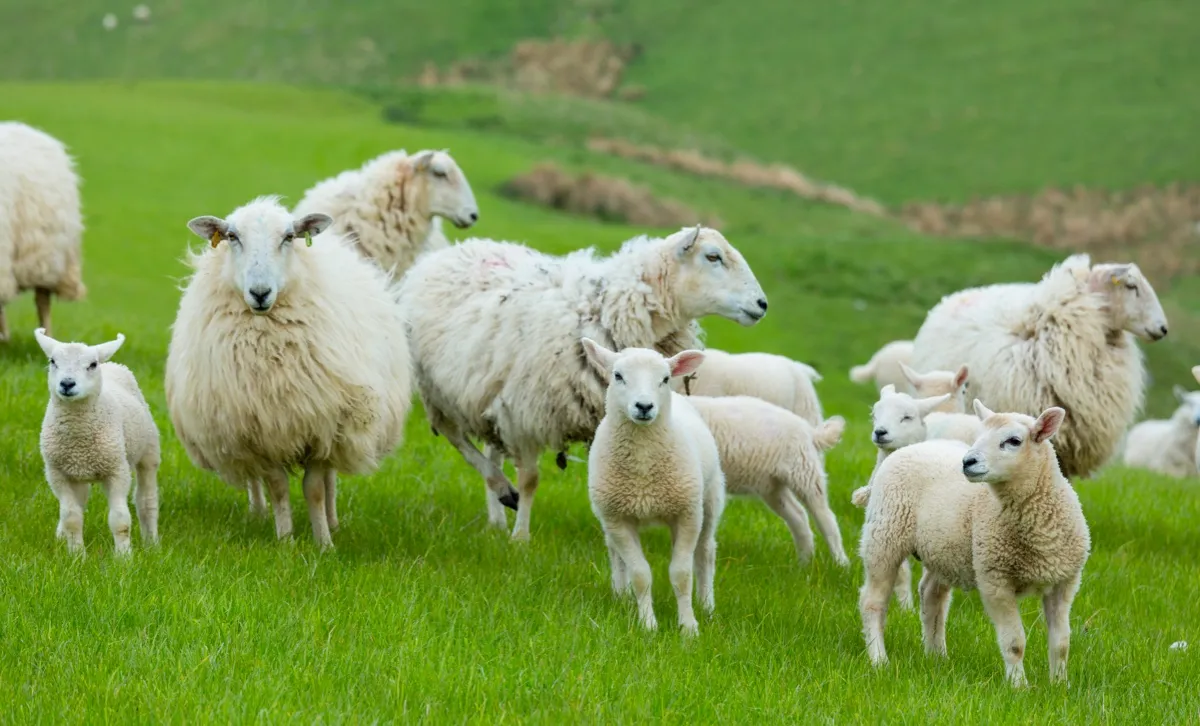February is a month of dark mornings and freezing fog, while here on the top of the Cotswold hills, the biting winter winds can be brutal. But you know the warmer, brighter days of spring can’t be far away when the first new arrivals of 2023 make an appearance.
We have been monitoring our pregnant ewes since the autumn, scanning them and checking on their nutrition. So now that we know the flock is fit and have calculated how many lambs to expect this year, the hard work is soon to commence. Lambing starts in mid-February to coincide with the opening of the Cotswold Farm Park and continues until mid-April, by which time we’ll have welcomed around 1,000 newborns.

Not all our sheep are commercial ewes; there are also the rare and native breeds that have their own mothering instincts and characteristics. For instance, the hardy Soay sheep, which originate from the Hebrides, have self-sufficiency imprinted into their DNA and give birth easily outdoors.
I’ve always been very proud to be a sheep farmer and while profit margins fluctuate, like all businesses, it’s an important part of our income and a satisfying way of life. Our commercial lambs will either be sold for the table, go on to other farms as breeding ewes or retained in our flock to secure the next generation.
I suppose sheep farming is the most visible sign of Britain’s livestock industry; you can see flocks just about everywhere, from Scottish crofts and Welsh mountain farms to the flatlands of East Anglia. And, of course, the Cotswolds has a sheep-rearing heritage that goes back to Roman times. So perhaps it’s no surprise that the UK sheep population rose to almost 15 million in 2022. On the whole, the British sheep industry is in good shape. Sheep farming is worth £1.5 billion to the UK economy and annual figures reveal the market has grown every year for the last five years.
But there’s no denying that it has been a worrying winter for sheep farmers. The lamb trade was one of the first victims of the cost-of-living crisis, as many shoppers began switching to cheaper alternatives or cutting down the amount of meat they buy. Meanwhile, the cost of buying-in feed has gone through the roof. Although, on our farm, we’re fortunate to produce just about everything our flock needs to stay healthy. The ration includes homegrown barley and beans, silage that has been pickling away nicely since the hay was cut last year, and straw, which is a useful by-product of the arable harvest.
So what about the year ahead? Well, there’s uncertainty about exactly what long-term effect free-trade deals with countries such as Australia and New Zealand will have on British lamb in the shops; there are still questions about the cost, quantity and quality of imported cuts. We might not get a true picture until we emerge from recession.
We are also waiting for the full details of the Government’s review of its post-Brexit arrangement to replace EU subsidies: Environmental Land Management Schemes (ELMS). We should know soon how that review might impact sheep farmers and how much we could receive in payments.
In the meantime, we’ll be hard at work in the lambing sheds, keeping our sector productive and profitable.
